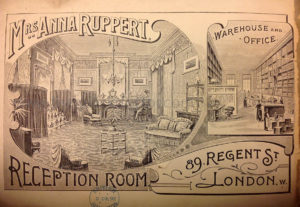SWAIM’S PANACEA.—This Medicine has acquired a very
extensive and established celebrity in Europe and America,
and its virtues are known and acknowledged by many of the most
respectable physicians of both countries. As an alterative, and
in various diseases, particularly in cases of inveterate corruption
of the blood descending to the second generation, it stands unri-
valled. Its safety and innocence have been fully tested, so that
it may be administered to the most tender and helpless infant.
No one, however, is advised to take it without being first con-
vinced of its efficacy and of the rectitude of the proprietor’s in-
tention. He has been induced to establish agencies in England
in consequence of the repeated and large orders for the Medicine
from various parts of the kingdom. He respectfully informs the
public that they can be supplied wholesale by EVANS, SON, and
CO., 85, Lord-street, Liverpool; EVANS and LESCHER, 4 Cripple-
gate-buildings, London; and retail by most of the respectable
Druggists in England, Ireland, and Scotland.
Source: The Liverpool Mercury, Friday 7 August 1847
.
If you’re Welsh, don’t be annoyed at being left out; count yourself lucky.
Although I’ve chosen a British ad here, the medicine’s home was Philadelphia, where William Swaim settled after a career as a bookbinder in New York. A probably apocryphal tale has him finding the panacea recipe scribbled on a blank leaf of a book he was binding; another story, related in James Harvey Young’s The Toadstool Millionaires, has Swaim finding out the ingredients from a reputable physician called Dr Quackinboss. Although this sounds made up, the name (but with the spelling Quackenboss), genuinely did belong to a New York doctor in the 1820s. (And for purposes of mild amusement, here is a modern example.)
Swaim’s advertising materials included booklets endorsing his nostrum, and the following unpleasant picture appeared in these and occasionally in his ads. You might recognise it if you saw the colour version recently displayed on the Ephemera Assemblyman blog. In this one, the bottle of Panacea is more prominent, and the facial expression more grotesque, but the depiction of the legs is thankfully less gruesome for the lack of colour.
Notice that the caption says ‘The representation and her actual appearance after having been Cured by the use of Swaims Panacea.’ I think they must mean ‘The representation of…’ but anyway, AFTER is the interesting word here. This image was supposed to encourage people to buy the medicine. Just think! Take this stuff and you too could spend the rest of your life hiding in a darkened room, tragically plastering your face with yet more mercurial preparations while the looking glass mocks you with the ghostly memory of the carefree beauty you were long, long ago.
The logic behind the use of this picture is difficult to grasp – any further theories welcome in the comments, but it could be:
1. In that state, Miss Linton should actually be dead, so the very fact that she’s sitting in a chair grinning is a testament to the miraculous power of the Panacea.
2. The horror of the image would exert a strange fascination on punters and compel them to read the promotional book. This is what happened to ‘Morleigh,’ the British writer of Life in the West, (1843):
‘…fronting the title page, we have a full-length portrait of a lady, or skeleton in a ball dress, grinning horribly. If this lady is cured, thought I, it would be very advisable for her to stay at home. Faugh! the very portrait has made me ill. I threw the book aside with scorn, little thinking that in a few days hence, when the book had mysteriously disappeared, I should earnestly seek a copy, and devour the contents with as much gusto as a starving sailor would munch an old shoe.’
.
To be continued…
In the next post – what was actually in Swaim’s Panacea, the proprietor’s on-off relationship with the medical profession, and how the Panacea’s success spawned blatant imitations.
.
Picture courtesy of the US National Library of Medicine





This is so hideously creepy.
The cure probably helped kill her, judging by the look of what appears to be flesh sliding off the bones. If I’d been her, I’d have committed suicide sometime shortly after this portrait.
As well as this, I would seriously hesitate to describe a facial expression caused by no longer having enough soft tissue to cover the skull beneath as a grin. She has no lips anymore.